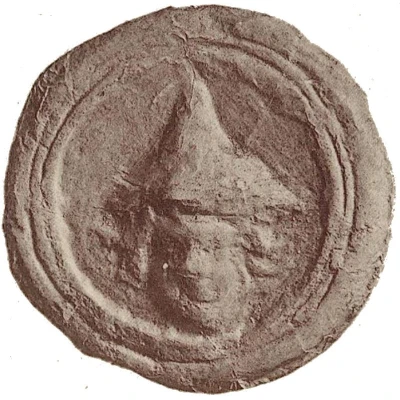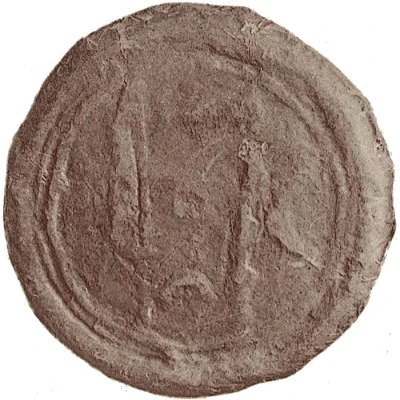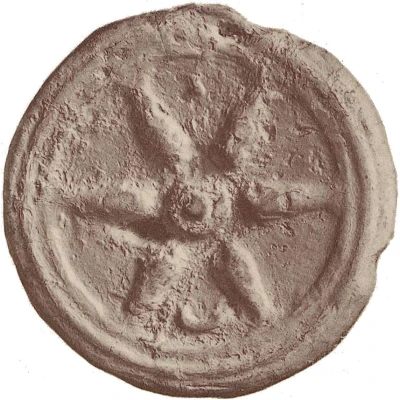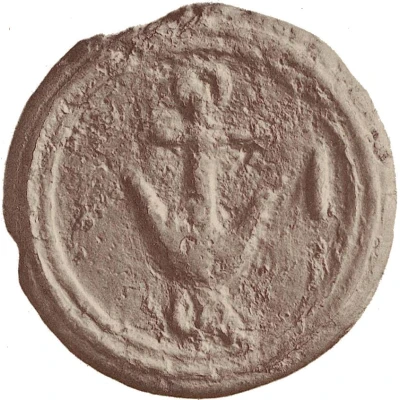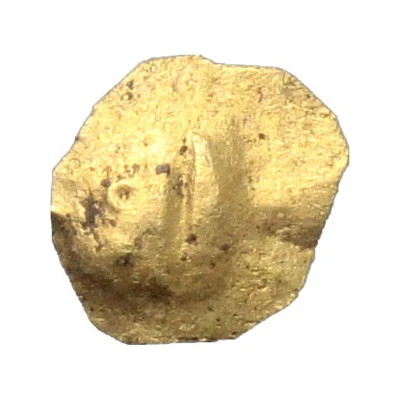
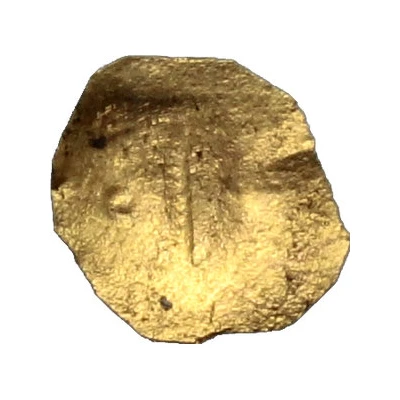

© Artemide Aste
Gold 1 As 301 BC - 201 BC
| Gold | 0.02 g | 6 mm |
| Issuer | Uncertain Etruscan mint (Etruria) |
|---|---|
| Type | Non-circulating coin |
| Years | 301 BC - 201 BC |
| Value | 1 As |
| Currency | As (circa 301-201 BC) |
| Composition | Gold |
| Weight | 0.02 g |
| Diameter | 6 mm |
| Shape | Round (irregular) |
| Technique | Hammered |
| Demonetized | Yes |
| Updated | 2024-10-09 |
| Numista | N#179789 |
|---|---|
| Rarity index | 100% |
Reverse
Incuse value between two dots (uniface).
Edge
Plain
Comment
Only three examples are known, with all find spots being in Etruria. One was found at Blera (Bieda) in 1885, and another was found in Chiusi (Chamars) before 1874.The extremely light weight indicates these were probably not meant to circulate, but were rather used in a way similar to a Charon’s obol (a coin made to place in the mouth of the deceased to either protect the person's soul or to prevent the soul from returning).
This type is said to have been struck some time in the 3rd century BC.
Interesting fact
One interesting fact about this coin is that it features a unique blend of Etruscan and Greek influences in its design. The obverse side of the coin depicts a lion's head, which is a common motif in Etruscan art, while the reverse side features a Greek-style owl, symbolizing wisdom and knowledge. This blending of cultural influences reflects the complex history and cultural exchange that occurred in the region during this time period.
